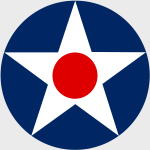Hobby Master HA7305 USN Grumman F3F-1 "Flying Barrel" Biplane Fighter - VF-7, USS Wasp (CV-7), Neutrality Patrol, 1940 (1:48 Scale)
"Nothing can stop the attack of aircraft except other aircraft."
- General Billy Mitchell
 The Grumman F3F was the last American biplane fighter aircraft delivered to the United States Navy. Designed as an improvement on the single-seat F2F, it entered service in 1936 and was retired from front line squadrons at the end of 1941.
The Grumman F3F was the last American biplane fighter aircraft delivered to the United States Navy. Designed as an improvement on the single-seat F2F, it entered service in 1936 and was retired from front line squadrons at the end of 1941.
The Navy's experience with the F2F revealed issues with stability and unfavorable spin characteristics, prompting the October 15th, 1934 contract for the improved XF3F-1, placed before F2F deliveries began. The contract also required a capability for ground attack, in addition to the design's fighter role. Powered by the same Pratt & Whitney R-1535-72 Twin Wasp Junior engine as the F2F, the fuselage was lengthened and wing area increased over the earlier design. A reduction in wheel diameter allowed greater fuselage streamlining, eliminating the prominent bulge behind the cowling of the F2F.
The prototype, BuNo. 9727, was delivered and first flown on March 20th, 1935 with company test pilot Jimmy Collins making three flights that day. Two days later, six dive-recovery flights took place; on the tenth, the aircraft's pullout at 8,000 ft (2,438 m) registered 14 g on the test equipment. The aircraft broke up in midair, crashing in a cemetery and killing Collins. A second, strengthened prototype was built, but it crashed on May 9th of the same year following the pilot's bailout during an unsuccessful spin recovery. The second prototype was rebuilt in three weeks, flying on June 20th, 1935. An order for 54 F3F-1 fighters was placed on August 24th of that year, following the conclusion of the flight test program.
Pictured here is a 1:48 scale replica of an US Navy Grumman F3F-1 "Flying Barrel" biplane fighter that was attached to VF-7, then embarked upon the USS Wasp during 1940.
Sold Out!
Dimensions:
Wingspan: 8-inches
Length: 5-3/4-inches
Release Date: June 2010
Historical Account: "The Neutrality Patrol" - At the beginning of World War II, when Nazi Germany's invasion of Poland on September 1st, 1939, started hostilities in Europe, President Franklin D. Roosevelt immediately declared the United States’ neutrality. The Neutrality Patrol, organized September 4th, 1939, as a response to the war in Europe, was ordered to track and report the movements of any warlike operations of belligerents in the waters of the Western Hemisphere. To augment the fleet units already engaged in the Neutrality Patrol, which President Roosevelt had placed around the eastern seaboard and Gulf ports, the Navy recommissioned 77 destroyers and light minelayers which had lain in reserve at either Philadelphia or San Diego.
The Neutrality Patrol led to U.S. warships assisting British Royal Navy vessels in convoying merchant shipping across the Atlantic Ocean. This placed U.S. naval personnel at considerable risk, as shown by the sinking of the destroyer USS Reuben James from Convoy HX-156 by U-552 on October 31st, 1941.





![Star Trek Klingon Goroth's Transport [With Collector Magazine]](http://cdn4.volusion.store/qh9e9-jdqv9/v/vspfiles/photos/EMST0071-1.jpg?v-cache=1740197136)
